#ROMAN EMPEROR
Explore tagged Tumblr posts
Text

~ Sardonyx cameo portrait of the Emperor Augustus.
Period: Early Imperial, Claudian
Date: ca. A.D. 41–54
Culture: Roman
Medium: Sardonyx
#ancient#ancient art#history#museum#archeology#ancient sculpture#ancient history#archaeology#roman#ancient rome#sardonyx#Augustus#emperor#roman emperor#roman empire#cameo#portrait#claudian#imperial period#A.D. 41#A.D. 54
704 notes
·
View notes
Text
Roman Empire, Italy: The Roman expansion in Italy covers a series of conflicts in which Rome grew from being a small Italian city-state to be the ruler of the Italian region… In 200 A.D., Rome had roughly 1,200,000 citizens, and today it has over 2,500,000 residents. Rome started as a small Italian village along the Tiber River roughly 1,100 years before it became the largest city in the world.. Gladiator is loosely based on real events that occurred within the Roman Empire in the latter half of the 2nd century AD… Marcus Aurelius Antoninus better known by his nickname Caracalla was Roman emperor from 198 to 217 AD. Wikipedia
#Roman Empire#Rome 200 AD#(200–197 BC)#Second Macedonian War#Gladiator#Timeline of Roman history#Caracalla#Roman emperor#Rome#Italy#europe
326 notes
·
View notes
Text
Y’all I need him. I NEED THAT MAN. Need him. Want him. *naws at enclosure bars* I NEED HIM SOOOOO BAD. How in the hell is he so cute. DAMN. I need to give him the biggest cuddle ever. I just want to kiss his cute face. Rest my head on his chest. Like BABY COME HOME TO THE KIDS. To call him baby and just stroke his face. I’m so down bad.
#shiftblr#reality shifting#shifting community#shifting#shifting diary#1111#roman empire#gladiator ii#and yes im shifting to the Roman Empire#giggling and kicking my legs#roman emperor#pookie#down bad#need him#history shitposting#benedict bridgerton
239 notes
·
View notes
Text









“Marmoream relinquo, quam latericiam accepi”
— Augustus, First Roman Emperor
#ancient rome#augustus#classics#roman empire#roman emperor#emperor#roman#rome#italy#roma#gaius octavius#aesthetic#academia#latin#quote#ruler#city#daily#literature#classic academia#classic literature#academia aesthetic#books#moodboard#architecture#roman architecture#ancient roman art
232 notes
·
View notes
Text
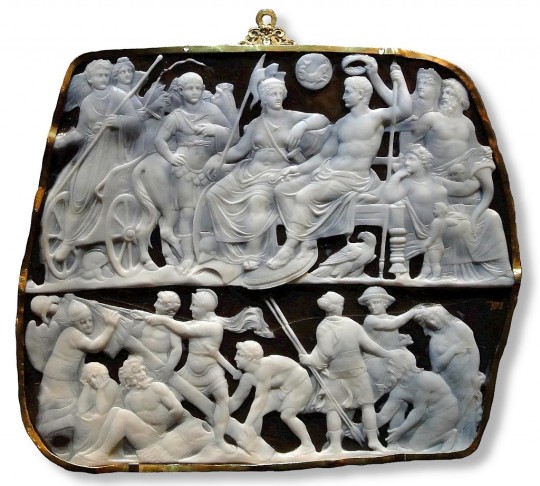
Gemma Augustea, an extensive cameo created at the beginning of the 1st century AD.
While the exact interpretation of the figures varies, the seated man in the upper half is most certainly Augustus. The man exiting a chariot on the left is most likely Tiberius, his chosen successor, and the officer in the cuirass might be Germanicus.
#augustus#tiberius#germanicus#ancient rome#roman empire#ancient art#ancient history#julio claudian dynasty#cameo#roman art#engraved gem#emperor augustus#emperor tiberius#roman emperor#gemma augustea
233 notes
·
View notes
Text

"The North Hertfordshire museum will now refer to the emperor Elagabalus with female pronouns.
Museum policy states the pronouns used in the displays will be those ‘the individual in question might have used themselves’ or whatever pronoun ‘in retrospect, is appropriate’."
source 1
source 2
#destiel meme#destiel meme news#world news#news#ancient rome#roman empire#roman emperor#elagabalus#rip elagabalus you were a real one#trans history#i guess#transgender#trans woman#this is pretty cool actually#now can we get the same treatment for historical persons that weren't horrifically assassinated
795 notes
·
View notes
Text
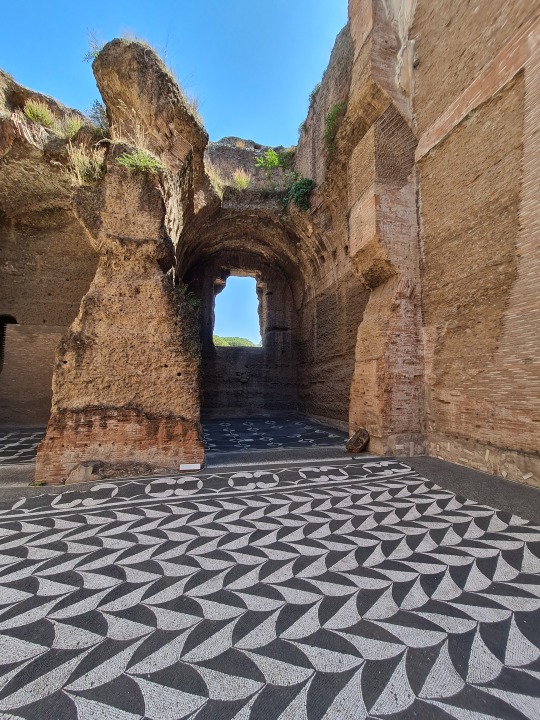
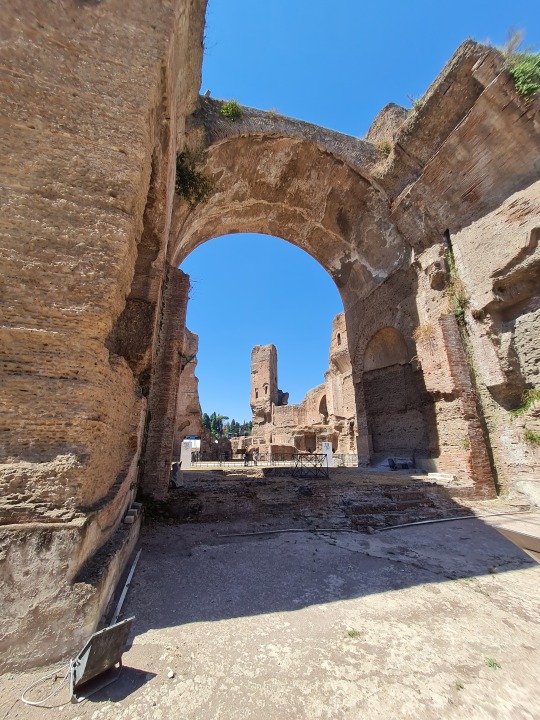
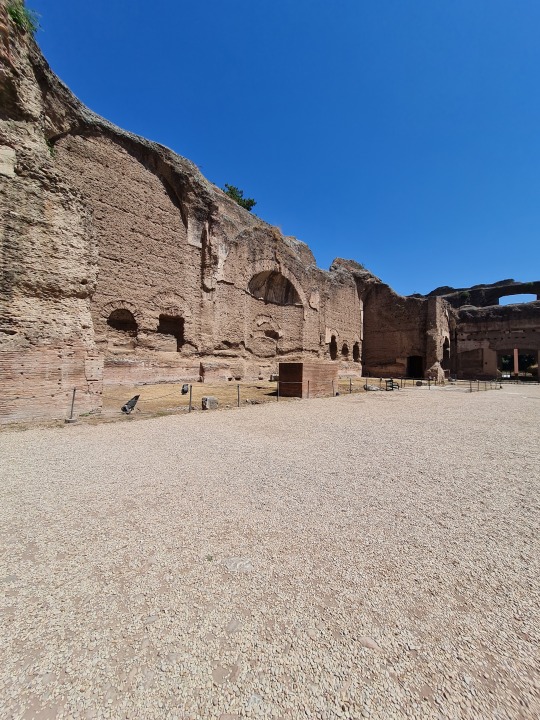
The Baths of Caracalla in Rome, Italy
The Baths were unprecedented in size: 1600 Romans could bathe at the same time. Apart from the bathing facilities, there were two libraries and there were shops, offices, gardens and even an area for sport. It simply didn't fit inside of Rome, and that is why it was built just outside of it, by the Appian Way (Via Appia).
#baths of caracalla#ancient rome#ancient history#ancientmonuments#roman empire#roman emperor#rome#italy#italia#roman architecture#architecture#architettura#ruins#history#culture#archaeology#roman archaeology#roman history#mosaic#roman mosaic#travel#traveling#travel photography#photography#wanderlust#vacation#travel tips#travel destinations#explore#.5k
999 notes
·
View notes
Text

Antoninus Pius (AD 138-161)
ANTONINVS AVG PIVS PP TRP COS III The Emperor Antoninus Pius, Father of his Country with Tribunician Power, Consul for the third time.
Antoninus was adopted by the Emperor Hadrian. Despite a lack of experience in government, he proved to be an efficient and respected emperor. The extension of the frontier into Scotland gave Antoninus valuable military prestige and gained him an Imperial Acclamation, commemorated on a coin with the words IMPERATOR II.
Hunterian Museum, Glasgow
#romans#roman empire#roman emperor#roman army#roman coins#archaeology#symbols#roman soldiers#ancient cultures#ancient living#metalwork#coins#hunterian museum#Glasgow
104 notes
·
View notes
Text
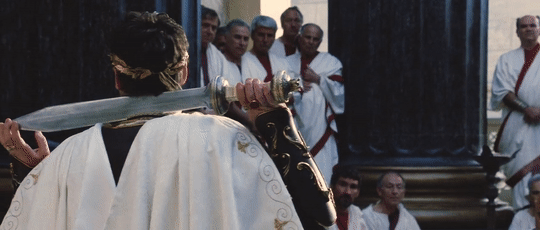
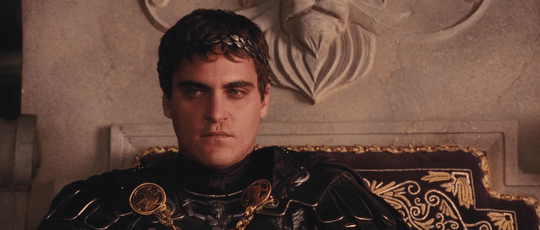

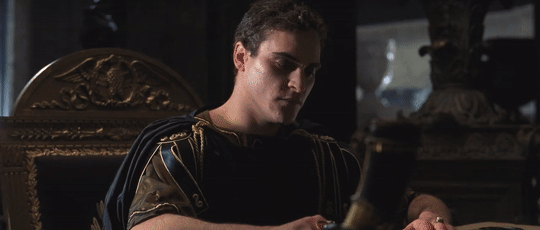

"You wrote to me once, listing the four chief virtues: Wisdom, justice, fortitude and temperance. As I read the list, I knew I had none of them. But I have other virtues, father. Ambition." - Joaquin Phoenix as Commodus (Gladiator, 2000)
Pt. 1, Pt. 2
#Young Joaquin is so slept on fr#Best villains of all time#Commodus#Joaquin Phoenix#weak for scary men with sad eyes#Gladiator#movie gifs#Ridley Scott#Roman empire#Rome#film gifs#joker 2019#colosseum#John Mathieson#Roman Emperor#cinema#film#Russell Crowe#2000#napoleon movie#napoleon 2023
471 notes
·
View notes
Text
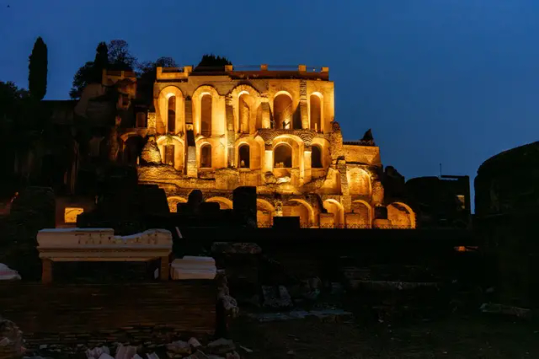
Rome’s 'Lost' Imperial Palace 'Domus Tiberiana' Reopens
Until recently a crumbling and off-limits ruin near the famous Colosseum, the Domus Tiberiana palace — built in the first century AD and beloved by Nero — hopes to once again take its place as one of the city’s top tourist attractions.
The ancient palace sits on Palatine Hill — the city’s oldest hill, overhanging Rome —from where imperial dynasties ruled for centuries. But over the years, the site fell into disrepair and in the 1970s, the Domus Tiberiana site was shut due to the structural instability of some of the ruins. The closure left behind what many Romans described as a “black hole” in the capital’s archaeological heart.
Now, after a six-year makeover, the palace has reopened its doors as a “diffuse museum,” with findings and frescoes scattered across the site to provide visitors with an insight into the palace’s ancient grandeur.
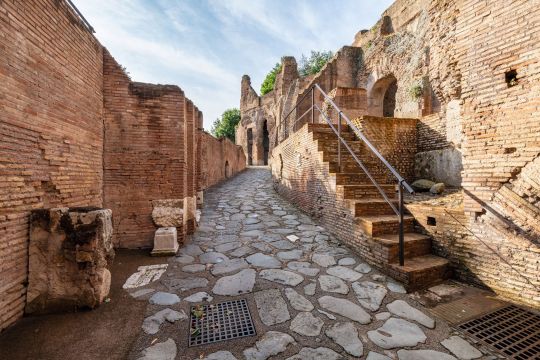
And it was grand. The Domus Tiberiana was Rome’s first imperial palace, built by the emperor Tiberius who combined and incorporated the pre-existing noble mansions built on the hill. Occupying over four hectares, the palace featured residences alongside large gardens, places of worship and rooms for the emperor’s Praetorian guard.
As the seat of Rome’s power and politics, Domus Tiberiana held a prime location, high above the Palatine and Roman Forums, offering its occupants a “balcony view of the city.” Over time, the Domus was embellished and enlarged by other emperors including Nero, who was crowned on its steps aged just 16, in 54 AD.
Alfonsina Russo, director of the Colosseum’s archaeological park (in which Domus Tiberiana falls) and lead archaeologist on the renovation, said that ancient antiquities, many exceptionally well-preserved, were unearthed during the project.
The artifacts — bright stuccos, frescoes, amphorae, potteries, looms, terracotta, and divinity statues related to the cults of Isis, Dionysius and Mithras — offer visitors a trip through time, said Russo.
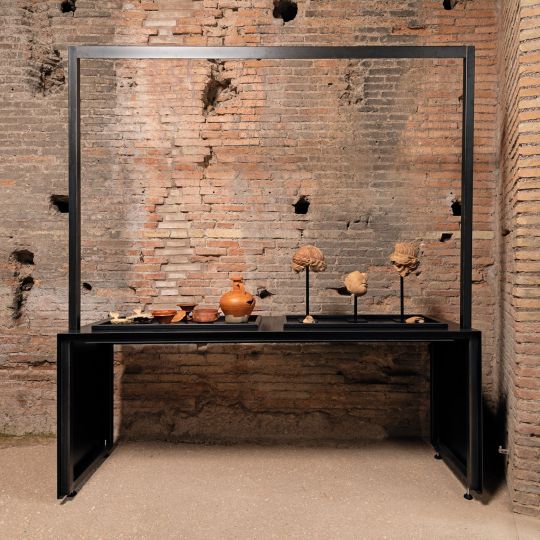
“They make this place — formerly (inhabited) by aristocratic families, then Roman emperors — feel alive again,” she said. “There are seven exhibition rooms full of extraordinary finds, starting with those preceding the original construction of the palace when aristocrats lived in mansions before Tiberius subsumed them into the Domus.”
Among the newly-exposed and frescoes are some of the earliest paintings of lemons (considered an exotic fruit in Ancient Rome, as they hailed from the Far East) and a depiction of a gladiator, proving that the era’s gladiatoral games were appreciated by rich families, explained Russo.
The imperial palace remained in use until the 7th century, when it became the papal residence of John VII. In the mid-16th century, the aristocratic Farnese family — who were powerful local landowners — built the lavish Orti Farnesiani gardens on the site, adorning it with ornaments and sculptures of nymphs, satyrs and fauns.
“This monument speaks of history,” Russo added. “We have restored (Domus Tiberiana) to its past splendor, but more work lies ahead.”
Indeed, painstaking efforts have been made to blend old and new. A series of majestic, reddish-brown vaulted arches that greet visitors having been carefully reconstructed with the same materials as ancient Romans used in the past.
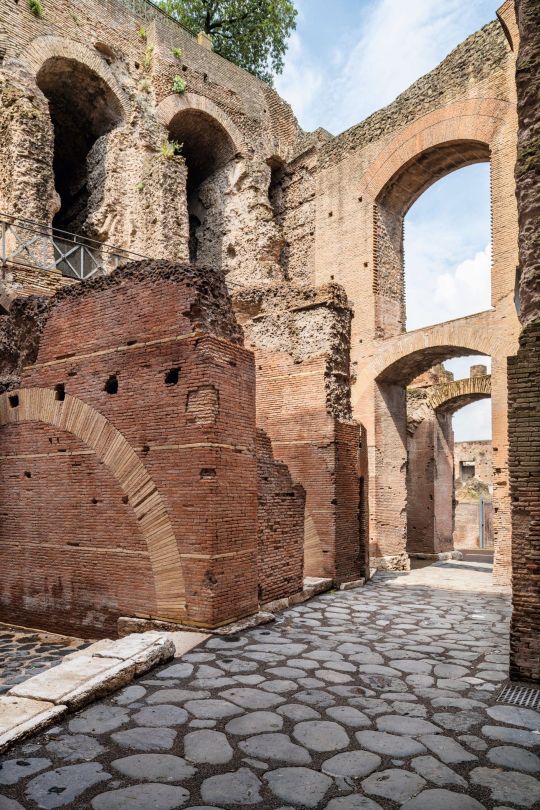
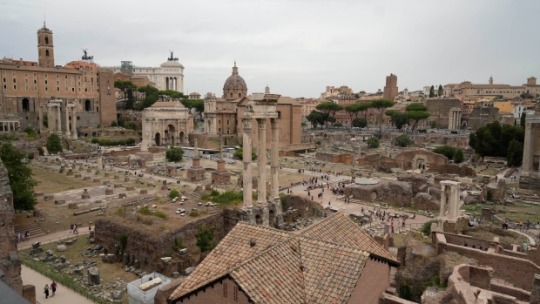
“What makes this revamped Domus unique is the architectural style,” said Russo. “We managed to use original materials to reinforce and strengthen the handmade 15-meter (50ft) tall front arches (which run alongside the palace’s) ancient paving.”
It has certainly caught the public’s attention. Since reopening at the end of September, Domus Tiberiana has attracted some 400,000 visitors, a “huge success,” said Russo, adding that she believes that this incarnation of the Domus Tiberiana offers visitors the most “evocative” visit in generations.
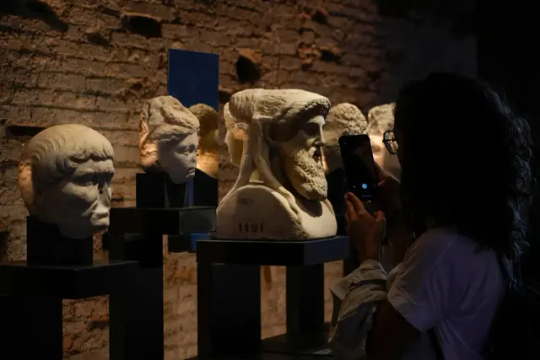
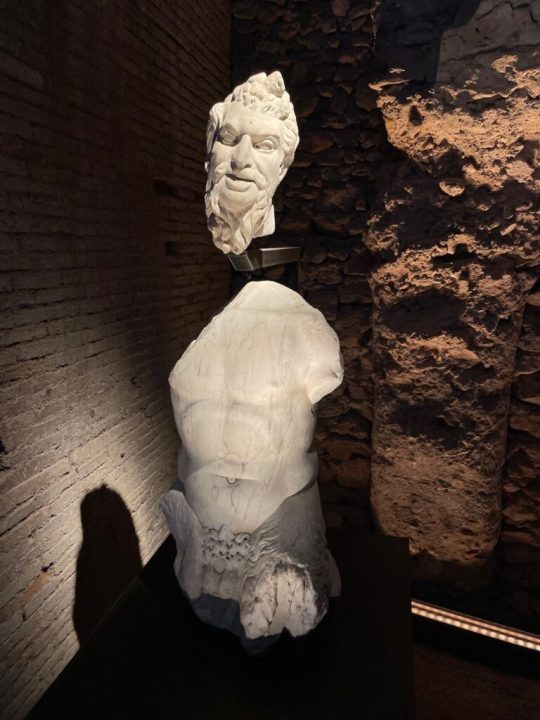
Archaeologist and scholar of ancient Rome Giorgio Franchetti saidN that, in the reopening of the Domus Tiberiana complex, Rome has “recovered a lost jewel.”
“The Palatine Hill has always been the stage of Rome’s power politics,” he said in an interview. “Tiberius likely chose this spot to build the palace as it was where his family residence stood. There aren’t many places like the Domus Tiberiana where you can really breathe the past.”
By Silvia Marchetti.
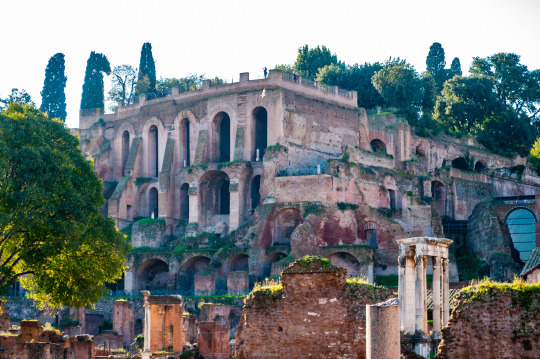
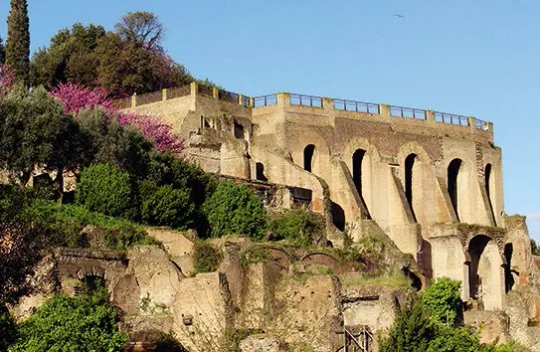
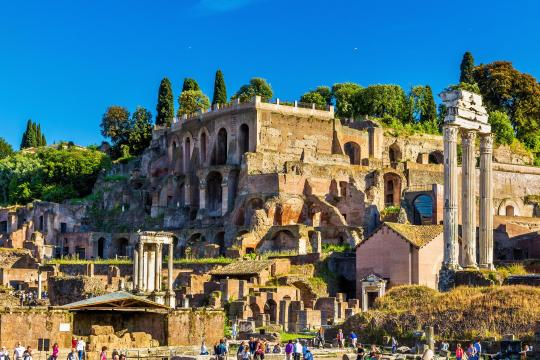
#Rome’s 'Lost' Imperial Palace 'Domus Tiberiana' Reopens#Domus Tiberiana palace#Palatine Hill#Emperor Tiberius#Emperor Nero#ancient artifacts#archeology#archeolgst#history#history news#ancient history#ancient culture#ancient civilizations#ancient rome#roman history#roman empire#roman emperor#roman art
273 notes
·
View notes
Text
"Augustus - First Emperor Of Rome", Adrian Goldsworthy

Intriguing, captivating, objective.
A complete, beautifully written biography of one of the most influential figures of the ancient world.
It's the second work I read from Goldsworthy and it just proves his genius and mastery once again.
Truly amazing.
~ kyky
#reading#dark academia#literature#book review#books#book recommendations#books and reading#book quotes#book reccs#livro#livros#roman empire#roman emperor#augustus#caesar augustus#rome#history#biography#historical#nonfiction
63 notes
·
View notes
Text
I was on a sunken submarine being chased by Shrek dressed like a Roman emperor when I got to a locked door, terrified for my life I spun around to see Shrek just sorta chilling on a couch.
408 notes
·
View notes
Text
Yandere prince x reader who wants to recreate the Roman Empire pt. 1
Tw: Roman Empire, Roman emperors mentioned, many Roman history references, Corpus Iuris Civilis mentioned, Yandere behaviour, bad English as always
Masterpost
And, as he was walking in town accompanied by guards, the prince of your reign fell in love with you at first sight, such a good looking peasant talking to their friends so passionately, your hair glimmered in the sun as your face lit up with emotions while talking. To be honest he didn’t even hear what you were talking about but he was so enthralled, he just had to know you better, who knows maybe you were talking about gowns? Or maybe about how him, the prince of that kingdom, had done such an epic and innovative entrance after returning from war? He just couldn’t stop making scenarios in his head. But then he saw you grabbing your friend’s hand while smiling and talking. He might get the little twerp executed, their hand cut and given to him, just to feel your touch indirectly.
But no, it was far too soon and you would have had to bestow a gruesome show of violence on such a nice and warm day. So he resumed looking at you, hoping you were talking about him.
And to be fair he was right, in a way you were talking about the prince and the royal family, or to say it better their reign.
And how you would have done EVERYTHING better than how he did.
First things first you would have taken better inspiration from the predecessors (Romans), by changing the law to make it more like the law described in the Corpus Iuris Civilis of the emperor Justinian and in the De Legibus of Cicero but also applying some of the concepts of Nation written in the Pro Archia of Cicero and in other ancient texts.
Then you would have maybe re-created the Cursus Honorum, recreating also the plebeian tribune with all his powers and thus bringing back the glory of Republican Rome that would have created the perfect look to present the nation to the rest of the world while you appointed to yourself the job of consul sine collega (a consul who ruled alone, without a partner with the power to stop decisions) for life.
Your friends, while mildly concerned, were of similar opinions on many things especially one: your country has to change.
The royal family had to be no more.
You, or your friends for the matter, were no nobles; you weren’t poor, actually you were wealthy enough to study and you knew some Latin, but your family didn’t exactly swim in gold pools.
But the opportunity to put in action your plan was going to arrive.
A couple days after seeing you the prince returned to the same little plaza you were before and looked for you.
Unfortunately for him you were at home with your friends planning how to overthrow the government, start to rule and wage war against all the neighbouring nations in order to really recreate the empire.
And so, on the same day he sent a messenger to search for you after a very (maybe too) detailed description.
And in another couple of days the messenger (after visiting almost half of the houses of the reign) met you and your family and invited you to the royal palace.
You kinda mistook that “I love you I wanna get married” invitation for a “I discovered your overthrowing plans and want to execute you” invitation (which, to be honest, sounds more realistic) so you made up an excuse to get back to your room saying you needed to pack some things, but it didn’t work and you were dragged after almost beating up three guards with a fasces (a Roman weapon) brought kindly to the palace.
At the palace you found the prince on the throne waiting for you.
He was ugly didn’t look like emperor Augustus and smelly didn’t smell of the blood of the enemies of Rome.
You looked around to find the one guy who should kill you for planning a coup d’etat, but no one in the room seemed armed aside from the guarda that confiscated your fasces.
“Oh my beautiful Rose-“ he started.
He wasn’t taking in Latin, therefore you found utterly useless to listen to such a barbarous language.
You took the occasion to look around the palace, after recreating the Roman Empire you would need a palace for the senate, would this place be big enough?
There were too many windows for your liking, if you ever plotted to stab someone 23 times with your friendly colleagues and the adopted son of the murdered you would have been discovered instantly.
The furniture was also excessive, gold was nice and all but this chairs and thrones were dripping of hubris and excess.
And you would have had to paint everything white and take of that embroided silk coverings from the walls.
Maybe that was too much work, better to build something from scratch.
“Are you listening to me my love?” Said a voice and you felt an hand on your shoulder.
You looked up, the ugly non Augustus looking prince was in front of you.
How could he even dare thinking you were listening to someone talking in such a non Latin language?
Still you nodded.
He kissed you hand.
You almost kicked him right there and then, but you were able to contain yourself.
“Then what do you think?” He asked looking at you in the eyes.
“I want to recreate the Roman Empire” you answered, maybe he knew of your plans and wanted to beat his parents to recreate the Roman Empire.
Actually that was the most realistic reason for why he could want you in the palace alive.
And in that case you would let him help, then, as soon as the empire began, you would fight him in a battle at Actium against him and his Egyptian-but-technically-Greek-lover and win.
The prince looked at you.
You looked at him.
The prince got closer.
You got closer to the dozing off guard that had your fasces.
You looked at the prince.
The prince looked at you.
“…Was that an unfunny joke?” He asked, not outright furious but definitely kinda pissed off.
“…You do not want to recreate the Roman Empire?” You asked back with a smile that kinda looked like a constipation face.
“Why would I want that? I’m already going to rule, it would be stupid to bring back the Roman Empire, it would just put me in a stupidly risky position” he answered massaging the bridge of his nose “and then again the answer was Yes or No, not that difficult you-“
You took the fasces successfully from the guard.
The guard noticed and looked at you.
You looked at the prince and then at the guard.
The guard shook his head disapprovingly.
You looked at the guard and then without saying a word you used the fasces against the guards legs.
The other guards pushed you to the ground and immobilised you.
The prince got closer and stared at you.
He grinned.
“So, I tried to be kind before, but since it seems you don’t listen to people when-“ he started saying while grinning.
His use of a barbaric language annoyed you very much.
Therefore you decided not to listen to him again, choosing instead to think about the fall of the Roman Empire.
It was the fault of people like this guy, barbarians, that the Roman Empire had fallen.
What a disgrace.
“So” the prince lifted your chin to force you to look at him in the eyes “tell me your answer unless you wanna get beheaded right here and now~”
“Uh…” you know what? This guy was a arrogant barbarian! He didn’t deserve any yes “No”
He let go of your chin and pushed your head to the ground.
He kneeled above you and put an hand on his chin.
“Why? Why wouldn’t you marry me when I just asked you soooo nicely? I’m trying to be kind you know? Leaving you a choice, but a no…” he got up and started pacing around mumbling, then he stopped “I don’t think you meant it, dear, you must have got yes and no mixed up, am I right?”
Your head was kinda spinning, you definitely had a concussion.
So he asked to marry you…
Still a no for you, buuuut…
But actually you could, ya know, kill him off.
And take over.
And recreate the Roman Empire.
#male yandere#yandere oc#yandere x reader#yandere#yandere x you#parody#yandere x darling#yandere prince#roman empire#roman emperor#ides of march#mention#bad english#i’ m back
45 notes
·
View notes
Text

The bronze head of the statue of Emperor Tiberius, now in the National Archaeology Museum in Madrid, originally found in Tiermes (in antiquity known as Termantia).
#tiberius#emperor tiberius#ancient rome#roman empire#ancient history#ancient art#julio claudian dynasty#bronze statue#bronze sculpture#roman emperor#hispania
131 notes
·
View notes
Text
Starting to understand why my ex boyfriend was so obsessed with the Roman Empire 😭
#gladiator#gladiator ii#gladiator 2#emperor geta#emperor caracalla#geta#caracalla#pedro pascal#paul mescal#joseph quinn#roman empire#roman emperor#meme
46 notes
·
View notes
Text
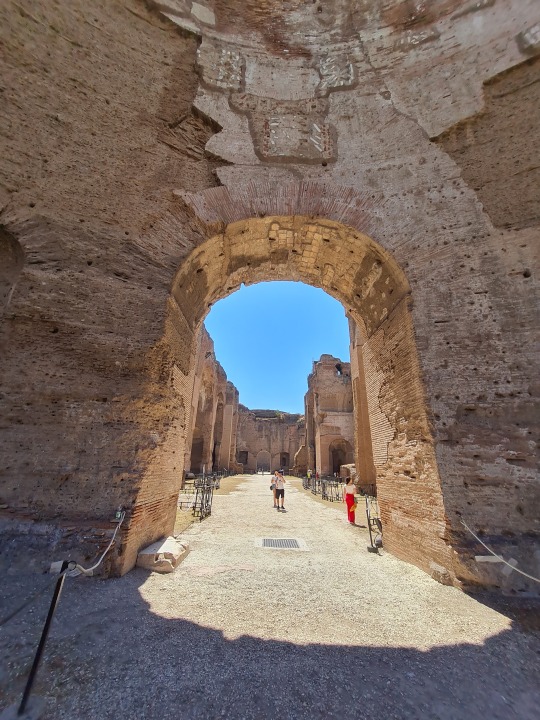


The Baths of Caracalla in Rome, Italy
The thermae were probably constructed during the reigns of the emperors Septimius Severus and his son Caracalla. This was between 211 and 216/217 AD.
#baths of caracalla#ancient rome#roman history#ancient history#ancientmonuments#archaeology#roman empire#caracalla#roman emperor#bath house#roman architecture#rome#roma#italia#italy#rome italy#travel#traveling#travel photography#history#culture#architecture#mosaic#roman mosaic#travel blog#wanderlust#explore#road trip#lazio#original photography
383 notes
·
View notes